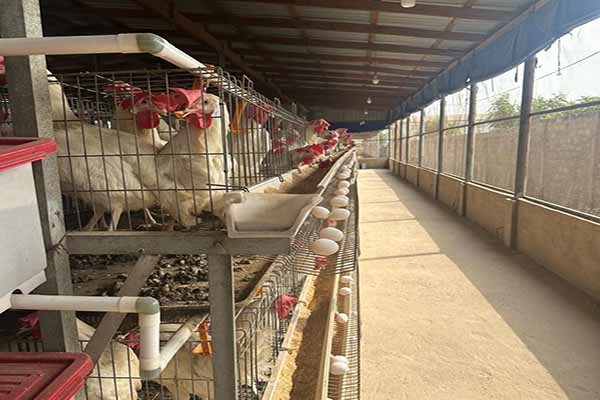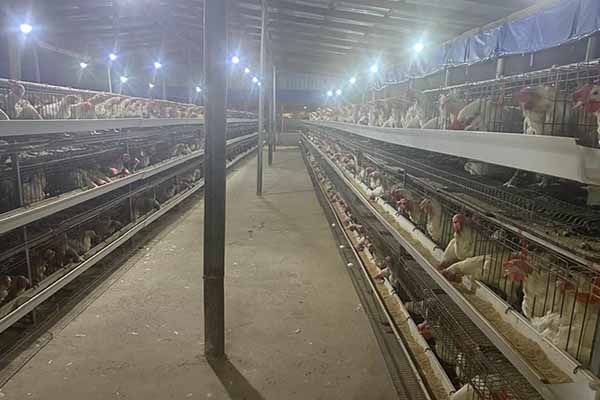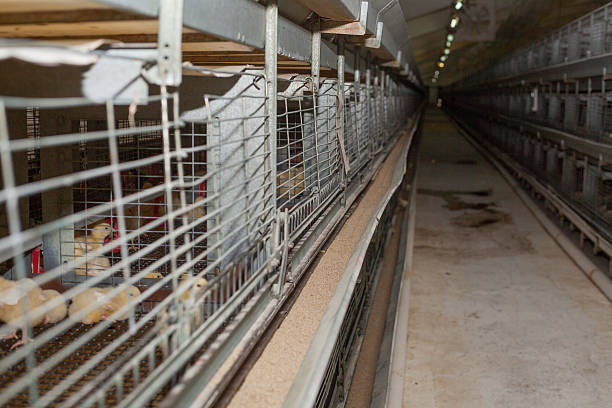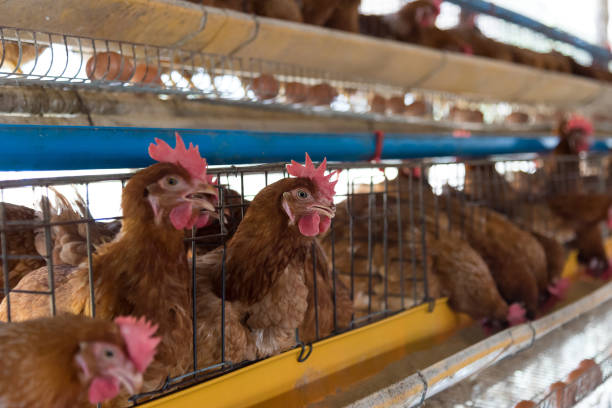Urban Poultry Farming in Africa: Choosing the Right Chicken Cages
Urban Poultry Farming in Africa: Choosing the Right Chicken Cages
Urban poultry farming is becoming increasingly popular in Africa as people seek sustainable food sources and income opportunities. While raising chickens in urban environments presents unique challenges, selecting the right chicken cages can significantly improve the success of your poultry venture. This comprehensive guide will explore the key considerations for choosing chicken cages for urban poultry farming in Africa, covering cage types, materials, size, features, and practical tips.
Why Urban Poultry Farming in Africa?
Before diving into the specifics of chicken cages, let’s understand why urban poultry farming is gaining traction in Africa:
Food Security: Urban poultry farming provides a readily available source of protein in the form of eggs and meat, contributing to household food security.
Income Generation: Selling eggs and chickens can supplement household income, creating economic opportunities for urban dwellers.
Reduced Transportation Costs: Locally produced poultry products reduce reliance on imports and lower transportation costs, making food more affordable.
Waste Management: Chickens can help manage household waste by consuming kitchen scraps, reducing the burden on municipal waste disposal systems.
Employment Opportunities: Urban poultry farms can create employment opportunities for people within the local community.
Fresh and Nutritious: Urban farms can provide fresh, nutritious poultry products directly to consumers, bypassing long supply chains.
Challenges of Urban Poultry Farming in Africa
Despite its benefits, urban poultry farming in Africa faces several challenges:
Limited Space: Urban areas often have limited space, requiring efficient and space-saving poultry housing solutions.
Disease Management: High population densities in urban areas can increase the risk of disease outbreaks in poultry flocks.
Noise and Odor Control: Poultry farming can generate noise and odors that may disturb neighbors, requiring careful management strategies.
Feed Availability and Cost: Access to affordable and nutritious chicken feed can be a challenge in some urban areas.
Regulatory Issues: Urban poultry farming may be subject to local regulations and zoning restrictions, requiring compliance with legal requirements.
Types of Chicken Cages for Urban Environments
Choosing the right chicken cage is essential for addressing the challenges and maximizing the benefits of urban poultry farming. Here are the most common types of chicken cages suitable for urban environments in Africa:
Battery Cages: Battery cages are a traditional method that is designed to maximize space utilization.
Layer Cages: Specially designed for egg-laying hens, these cages provide individual or small group housing with easy egg collection. They are often tiered to maximize space.
Broiler Cages: Designed for raising meat chickens (broilers), these cages provide adequate space for growth and easy access to feed and water.
A-Frame Cages: These cages are shaped like an “A” and can be built with a single tier or multiple tiers to accommodate more chickens. They are relatively easy to construct and maintain.
Flat Deck Cages: Flat deck cages are arranged in a single layer or multiple tiers with a flat surface. These cages allow for easy access to chickens and eggs.

DIY Cages: For small flocks, some urban farmers may opt to build their own cages using locally available materials like wood, wire mesh, and metal. DIY cages can be customized to fit specific space requirements and budgets.
Factors to Consider When Choosing Chicken Cages
Choosing the right chicken cages involves careful consideration of several factors:
Material:
Galvanized Steel: Galvanized steel is a popular material for chicken cages due to its durability, resistance to rust and corrosion, and ease of cleaning. Look for cages with hot-dip galvanization for superior protection.
Stainless Steel: Stainless steel is a more expensive but highly durable option for chicken cages. It is resistant to rust, corrosion, and bacteria, making it ideal for environments with strict hygiene requirements.
Plastic: Plastic cages are lightweight, easy to clean, and resistant to moisture. However, they may not be as durable as steel cages and can be susceptible to damage from pecking and scratching.
Wood: Wooden cages can be built from locally sourced timber. They can be more affordable but require regular maintenance to prevent rot and pest infestations.
Size and Capacity:
Space Availability: Consider the available space in your backyard or urban farm when determining the size and number of chicken cages. Ensure adequate space for chickens to move comfortably and access feed and water.
Chicken Breed: Different chicken breeds have different space requirements. Heavier breeds like Rhode Island Reds and Plymouth Rocks require more space than lighter breeds like Leghorns.
Cage Dimensions: Pay attention to the dimensions of the cages, including length, width, and height. Choose cages that provide adequate headroom and floor space for chickens to stand, stretch, and lay eggs comfortably.
Bird Density: The recommended bird density for chicken cages varies depending on the cage type and chicken breed. Avoid overcrowding, as it can lead to stress, disease, and reduced productivity.
Features and Accessories:
Automatic Watering Systems: Automatic waterers provide a continuous supply of fresh water to chickens, reducing labor and preventing water contamination. Nipple drinkers and cup drinkers are common options for chicken cages.
Automatic Feeding Systems: Automatic feeders dispense feed at set intervals, ensuring that chickens have access to feed throughout the day. This can save time and labor compared to manual feeding.
Egg Collection Systems: Layer cages often come with egg collection systems that allow for easy and efficient collection of eggs. Roll-out trays or conveyor belts can simplify the egg collection process.
Manure Management: Chicken cages should have provisions for easy manure removal. Sloping floors, removable trays, or belt systems can facilitate manure management and improve hygiene.
Ventilation: Adequate ventilation is essential for maintaining air quality in chicken cages. Cages should be designed to allow for airflow while protecting chickens from drafts and extreme temperatures.
Lighting: Proper lighting is necessary for stimulating egg production in laying hens. Install artificial lighting systems in chicken cages to maintain consistent light cycles, especially during the shorter days of the year.
Heating and Cooling: In regions with extreme temperatures, consider installing heating or cooling systems in chicken cages to maintain a comfortable environment for chickens.
Durability and Longevity:
Construction Quality: Choose chicken cages that are well-constructed and made from high-quality materials. Look for sturdy frames, secure joints, and durable wire mesh.
Rust and Corrosion Resistance: Ensure that the cages are resistant to rust and corrosion, especially in humid climates. Galvanized steel or stainless steel cages are recommended for long-term use.
Load-Bearing Capacity: Consider the load-bearing capacity of the cages, especially if you plan to stack them in tiers. Ensure that the cages can support the weight of the chickens, feed, and water without collapsing.
Warranty: Check if the cages come with a warranty from the manufacturer. A warranty can provide peace of mind and protect you against defects in materials or workmanship.
Ease of Cleaning and Maintenance:
Removable Parts: Choose cages with removable parts that can be easily cleaned and disinfected. Removable trays, floors, and feeders simplify the cleaning process.
Smooth Surfaces: Cages with smooth surfaces are easier to clean and disinfect than cages with rough or porous surfaces. Avoid cages with sharp edges or corners that can trap dirt and bacteria.
Accessibility: Ensure that all parts of the cages are easily accessible for cleaning and maintenance. This includes the interior of the cages, as well as the exterior frames and supports.
Disinfection Protocols: Establish a regular cleaning and disinfection schedule for chicken cages to prevent the spread of disease and maintain hygiene. Use appropriate disinfectants that are safe for chickens and the environment.
Cost-Effectiveness:
Initial Investment: Consider the initial cost of the chicken cages, including the price of the cages themselves, as well as any accessories or installation costs.
Operating Costs: Factor in the ongoing operating costs of the cages, such as the cost of feed, water, electricity, and labor.

Life Cycle Cost: Evaluate the life cycle cost of the cages, including the initial investment, operating costs, and maintenance expenses over the lifespan of the cages.
Return on Investment: Calculate the potential return on investment (ROI) for your urban poultry farming venture. Consider factors such as egg production, meat sales, and cost savings from waste management.
Tips for Choosing Chicken Cages:
Research Different Cage Types: Research the pros and cons of different chicken cage types to determine which best suits your needs and budget.
Visit Local Poultry Farms: Visit local poultry farms that use different types of chicken cages to see them in action and learn from experienced farmers.
Read Online Reviews: Read online reviews of different chicken cage brands and models to get feedback from other users.
Consult with Poultry Experts: Consult with poultry experts or agricultural extension agents for advice on choosing the right chicken cages for your specific circumstances.
Consider Local Climate: Adapt your chicken coop design for the climate in order to make the most of natural sources of light, heat and ventilation.
Start Small: If you’re new to urban poultry farming, start with a small flock and a few cages to gain experience before investing in a larger operation.
Prioritize Chicken Welfare: Above all, prioritize the welfare of your chickens when choosing chicken cages. Ensure that the cages provide a safe, comfortable, and enriching environment for your birds.
By carefully considering cage types, materials, features, and cost-effectiveness, urban poultry farmers in Africa can choose the right chicken cages to support healthy flocks, maximize productivity, and contribute to sustainable food systems.
Conclusion
Choosing the right chicken cages is a critical decision for urban poultry farmers in Africa. By carefully considering the factors outlined in this comprehensive guide, you can select cages that meet your specific needs and help you achieve success in your urban poultry farming venture. With the right cages, you can create a safe, comfortable, and productive environment for your chickens, while contributing to food security, income generation, and sustainable waste management in your community.





